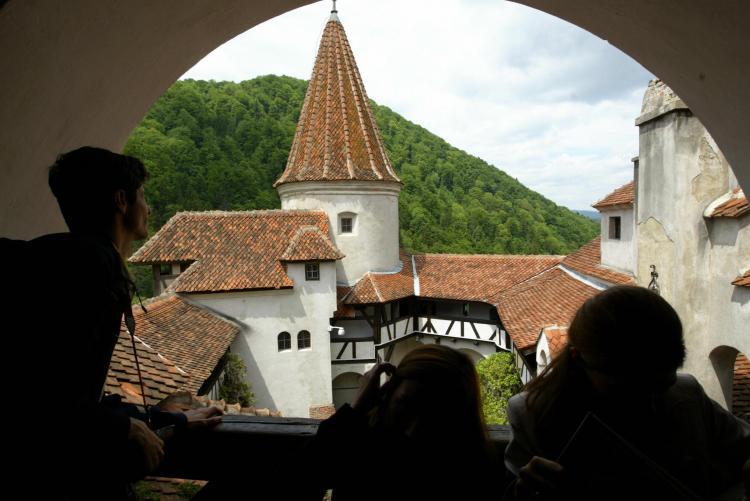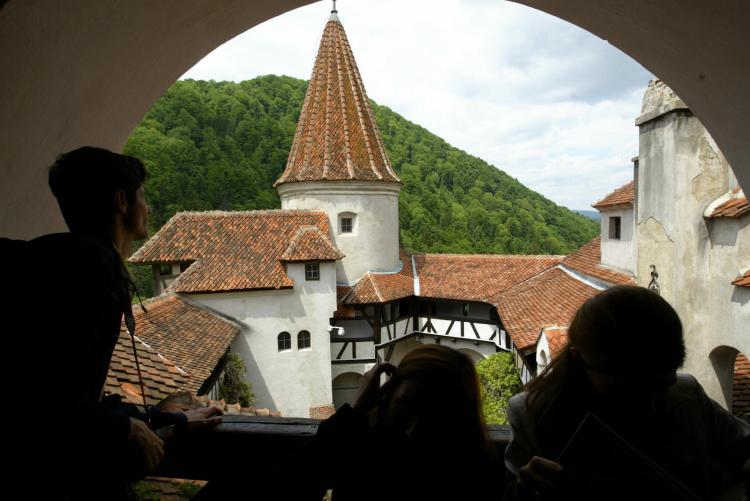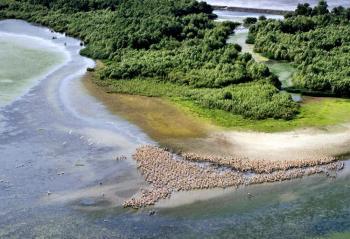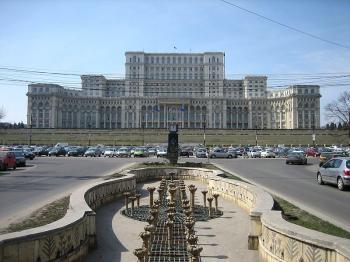ROMANIA—Bran Castle has earned its reputation as one of the most famous monuments of medieval architecture, known to tourists across the world as “Dracula’s Castle.”
Although Romania is full of old architecture and history, Bran Castle is arguably one of the most well known. Its claim to fame is the association with the infamous Count Dracula, the main character of Bram Stoker’s novel 19th century novel “Dracula.”
With its 17 rooms, Bran Castle is also one of the most expensive properties in the country, with a real estate value of around $140 million US.
An Embattled History
It was built in 1212 by an association of merchants from nearby Brasov, where its main task was originally to protect shipments that passed through the Rucar-Bran gorge that traverses the Carpathian Mountains.
In 1920, the City of Brasov donated the castle to Queen Maria of Romania, as a sign of gratitude for her contribution to the country; she restored it and left the inheritance to her daughter, Princess Ileana.
In 1948, however, the royal family was expelled by Soviet troops, supported by the pro-Soviet Romanian government at the time. It then became property of the government, and was opened for the public in 1956, with one of its sections transformed into a museum of medieval art.
Years of official negligence then led the Castle to near ruin, so between 1987 and 1993 it was put through a massive restoration project.
After the Romanian Revolution in 1989, the communist regime was abolished, and the Habsburg family—Bran Castle’s former owners—started legal proceedings to regain their asset. Years of painstaking efforts and a long legal battles later, Dominic of Habsburg, the grandson of Queen Maria, and Princess Ileana’s son, got the Castle back, almost six decades after it was confiscated from the family. They plan to transform it into a high-quality museum open to the public.
The Dracula Connection
The Bran Castle became famous after Bram Stoker wrote his famous novel “Dracula,” in which the main character, Count Dracula is also known as “the Vampire of Transylvania.” The truth is that the character in Stoker’s novel never existed, neither in Romanian history or folklore.
In actuality, Dracula is widely believed to have been inspired by the dark personality of Prince Vlad Tepes. The Prince ruled Vallachia, part of what is now Romania, during the 15th century. Although never accused of sucking blood, he certainly had a dark reputation.
During his childhood he was held as a political hostage by the Ottoman Empire, and spent many of his early years in Istanbul prisons. Later in his life he became Prince of Vallachia with some support from Hungarian royalty. He then became well known for the harsh punishments he exacted upon Turkish troops: a common practice was to impale enemy soldiers and leave them to die slowly. This is how he got his other name “Vlad the Impaler.” Apparently Vlad saw the cruel punishments as revenge for the mistreatment he received from Turks in his childhood.
He also ruled Vallachia with an iron first. Apart from committing atrocities upon his rise to power, petty theft was also dealt with through ridiculously harsh punishments for criminals; it is said that during his reign nobody even dared to pick money up off the ground.
While the story of the Prince aids in explaining the origin of Dracula’s character, the connection with the castle is still unclear; this is because Vlad Tepes never actually lived at the Bran Castle.
Western tourists who came to Romania in search of Dracula named Bran Castle “Dracula’s Castle” about three decades ago. They were surprised by how the entrance of the Transylvanian mansion resembled the castle described by Stoker in his novel, and thus named gave it this name. With the passage of time, it became a common belief that Stoker’s novel had some real connection with the Castle, but in reality this was not the case.
Now, a Popular Tourist Destination
These days, anyone journeying to Bran Castle with Stoker’s terrifying descriptions in mind will find that reality proves surprisingly different: the Castle itself is an old, benign, and beautiful example of medieval architecture. Tourists come only to find it nestled in a tranquil mountainous area with shepherds pasturing their herds, and wives weaving beautiful handmade textiles to adorn theirs homes.
While all this may disappoint thrill-seekers, they should be pleasantly surprised by Romanian hospitality and cuisine, which are among the best in Eastern Europe. Tours are available for those who want to spend the day at Bran, and overnight stays in the area are also possible.
Tourists also inevitably learn about Romanian folk legends during their stay. They might find out, for example, that if a garlic clove is placed above the door entrance, the house will be protected against evil spirits. Safe from harm, tourists return back to their homes with fond memories, and the desire to visit Dracula Castle’s and its beautiful surroundings again in the future.






